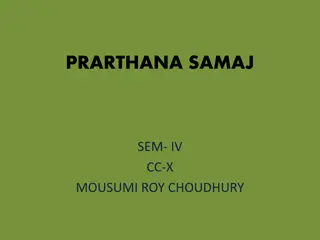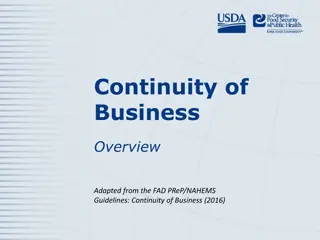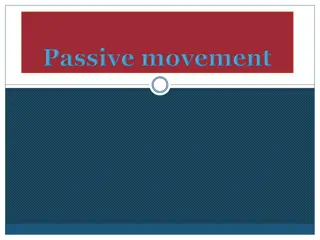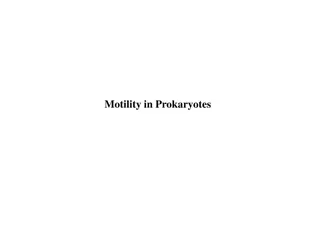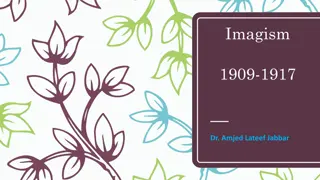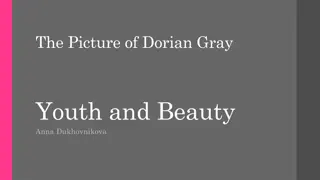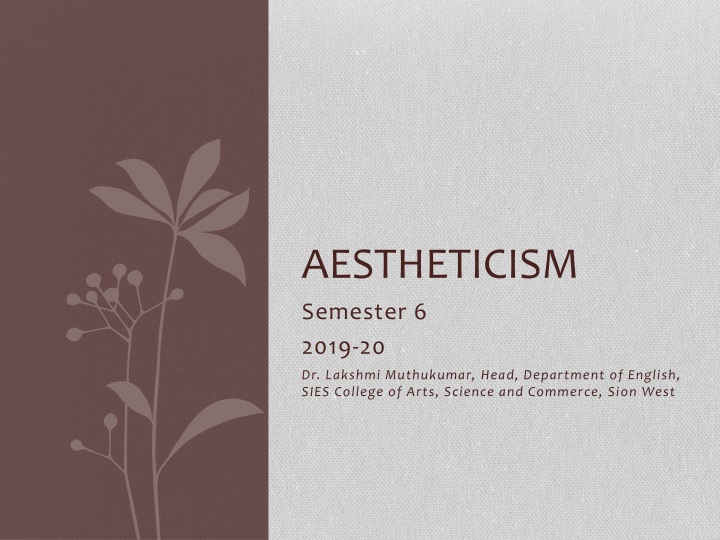
Exploring Aestheticism: Origins, Characteristics, and Influential Figures
Discover the essence of Aestheticism, a movement that prioritizes aesthetic values in art over societal objectives. Delve into its inception, defining features, and notable individuals like Walter Pater and Oscar Wilde, who advocated for the pursuit of beauty and pleasure in artistic expression.
Download Presentation

Please find below an Image/Link to download the presentation.
The content on the website is provided AS IS for your information and personal use only. It may not be sold, licensed, or shared on other websites without obtaining consent from the author. If you encounter any issues during the download, it is possible that the publisher has removed the file from their server.
You are allowed to download the files provided on this website for personal or commercial use, subject to the condition that they are used lawfully. All files are the property of their respective owners.
The content on the website is provided AS IS for your information and personal use only. It may not be sold, licensed, or shared on other websites without obtaining consent from the author.
E N D
Presentation Transcript
AESTHETICISM Semester 6 2019-20 Dr. Lakshmi Muthukumar, Head, Department of English, SIES College of Arts, Science and Commerce, Sion West
INDEX Introduction to Aestheticism Beginnings of the Movement Characteristics of this Movement Walter Pater Oscar Wilde
Introduction to Aestheticism Aestheticism emphasized aesthetic values as the purpose of art rather than burdening it with social- political goals. Proponents of aestheticism held that art does not have any didactic purpose. Life should copy art and not vice versa Main characteristics of the movement : 1. Suggestion rather than statement 2. Sensuality 3. Correspondence between words, colours and music 4. Extensive use of symbols
Introduction to Aestheticism As a philosophy, aesthetics refers to the study of sensory principles in other words judgment or evaluation by the senses. As a literary movement, it adopted an approach to life that emphasized the importance of art above all else, and the pleasure which could be found in beautiful things.
Beginnings of the Movement Reaction to Victorian attitude towards Art and Literature Opposition to Victorian Morality and Orthodoxy Dissatisfaction with the Utilitarian and Materialistic creed Stimulus towards Hedonism Influence of the French doctrine of art for art's sake
Characteristics of this Movement Relationship with other art forms and movements i. Painting ii. Hellenism iii. Synaesthesia Sensuality over Didacticism, suggestion over statement i. Beauty as the only criterion of art ii. Heightened language meets vulgar subject matter iii. Use of symbols
Characteristics of this Movement Escapist nature i. Belief that Life should imitate Art ii. Focus on the individual self iii. Denial of morality, utility and social roles
Walter Pater The Quarterly Review of January 1876 called him the most thoroughly representative critic the Romantic Age has yet produced. According to Pater, art comes to you proposing frankly to give nothing but the highest quality to your moments as they pass and simply for those moments sake. Defined beauty in the Preface to The Renaissance(1873).
Walter Pater Intellectual Hedonism. The true purpose of an artist is to create beauty and transcribe in his words his own Sense of Beauty . Scrupulous Literary Artist. Manner over Matter.
Oscar Wilde As a disciple of Pater, pushed Pater s aesthetic creed to the extreme & gave expression to its principles in the language of flippancy. Personified the movement through his life style. Philosophy : Art for art's sake in opposition to three contemporary attitudes. 1. Against Realism 2. Against Moralism 3. Idea of art as self-expression
Oscar Wilde Writing "The Picture of Dorian Gray" is typical of decadent aestheticism- ingenious, witty, polished and ornamental in style but lacking in human warmth.



